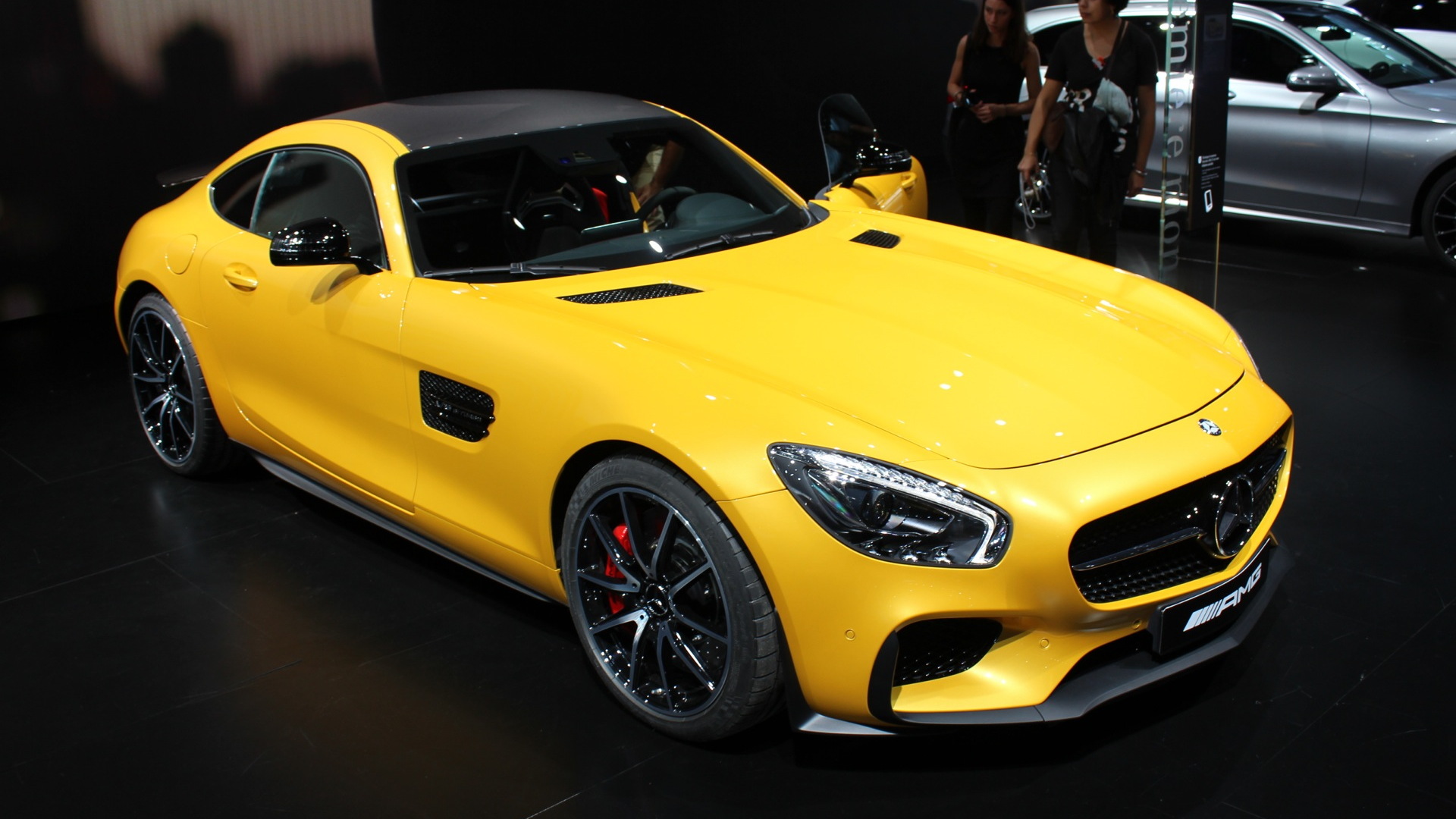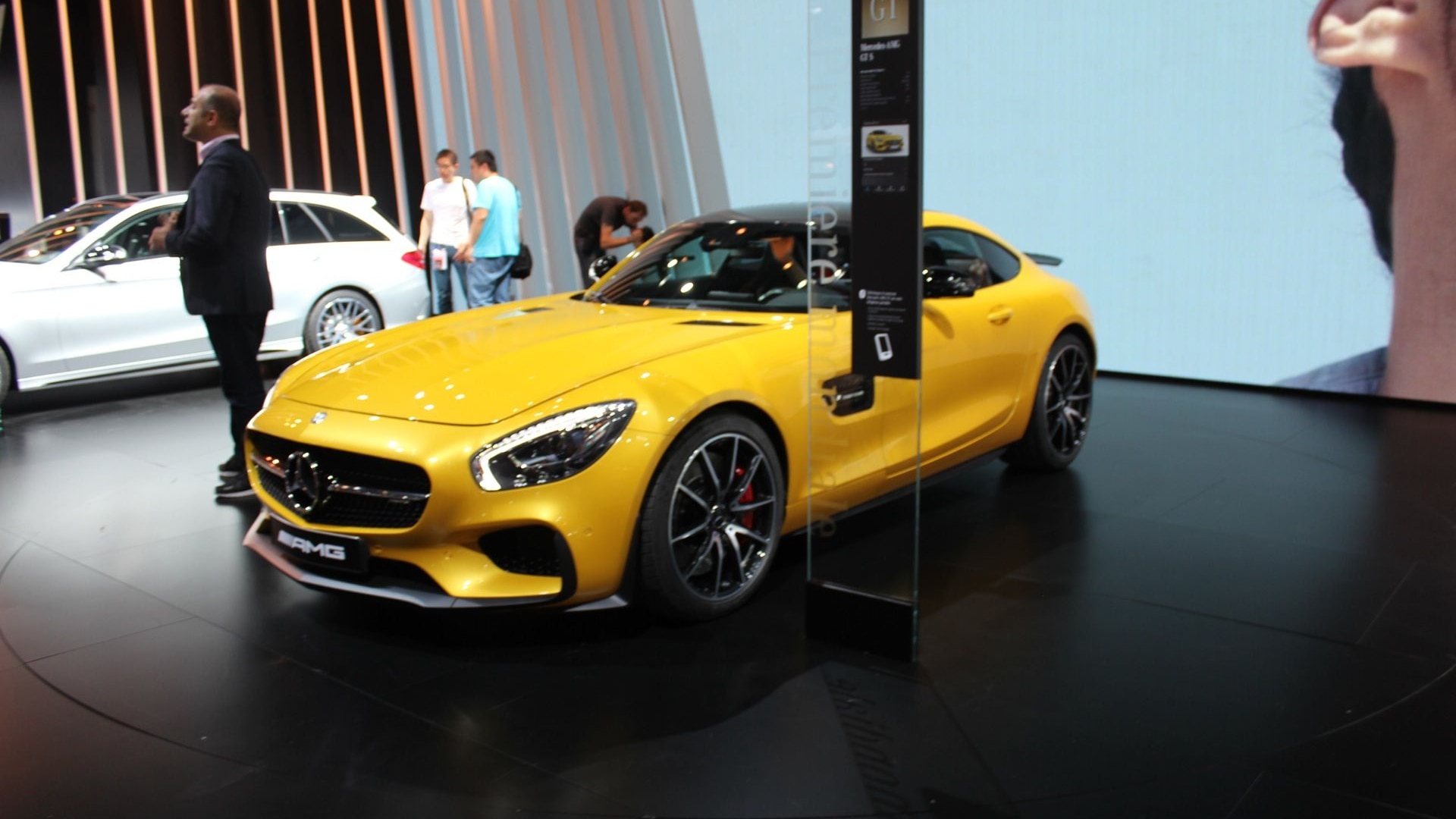That's good, because the Mercedes-AMG GT will need to be a car of its own. It is clearly aimed directly at its cross-town rival, the Porsche 911. To take on such a proven and capable sports car, the AMG GT will need to deliver not just on raw performance, but on the driving experience, quality, and comfort as well. AMG acknowledges this challenge.
MUST SEE: World's Only Privately Owned Ferrari Enzo Prototype For Sale
"With the new Mercedes-AMG GT, we are venturing out into a challenging sports car segment with its top-class competitive field. This is an incentive and motivation for us at the same time to prove to sports car enthusiasts around the world the kind of performance that AMG is capable of," said Prof Dr Thomas Weber, Member of the Board of Management of Daimler AG, Group Research & Mercedes-Benz Cars Development, in a press release.

2016 Mercedes-Benz AMG GT S
This is an AMG we’re talking about, so let’s dive straight into the specs. There are two models, the GT and GT S. The GT is the entry point, with 456 horsepower and 443 pound-feet of torque on tap from its M178 4.0-liter (3,982-cc) twin-turbocharged V-8 engine. Peak power arrives at 6,000 rpm, while peak torque is available from 1,600 rpm to 5,000 rpm, promising a pliable and willing driving experience. Acceleration is claimed at 3.9 seconds for the 0-60 mph dash, in preliminary AMG testing, while top speed is electronically limited to 189 mph.
The GT S, which will actually hit the U.S. market first, ups the ante on all fronts: 503 hp at 6,250 rpm (or from 6,000-6,500 rpm with the AMG Dynamic Plus package); 479 pound-feet of torque from 1,750-4,750 rpm (or 1,750-5,000 rpm with the Dynamic Plus package); and acceleration sits at just 3.7 seconds to 60 mph. Top speed for the GT S is electronically limited to 193 mph.
Beyond that, the specs involve weight distribution (47 percent on the front axle, 53 percent on the rear), the “hot inside V” turbocharger arrangement, and dry sump lubrication—the combination of the latter two being a claimed world’s first application in a sports car engine. A seven-speed dual-clutch transaxle mounted at the rear handles gear shifts and sends power to the rear wheels. An aluminum space frame holds it all together, extracting extreme stiffness from a body shell that weighs just 509 pounds.

2016 Mercedes-Benz AMG GT S
As you’d expect from any all-new super sports car these days, the Mercedes-AMG GT duo offers some special high-tech electronics to aid the driver, not just for safety, but for performance as well.
Tobias Moers, CEO of Mercedes-AMG, recognizes the need for top-of-segment driving quality. “With its technological substance, the Mercedes-AMG GT fulfills our high aspirations with regard to driving dynamics, agility and sportiness. The new GT is the second sports car developed fully independently by Mercedes-AMG. The car is manufactured according to the motto 'Handcrafted By Racers’—which perfectly encapsulates our heritage and our spirit,” Moers said in the release.
CHECK OUT: 2016 Koenigsegg Agera R Development Prototype Crashed On Nürburgring: Spy Shots
The usual AMG Dynamic Select system is present, allowing the driver to choose between C (Controlled Efficiency), S (Sport), and S+ (Sport Plus) modes. All-new for the GT and GT S is the I (Individual) mode, which lets the driver individually tailor engine, transmission, damper, and other settings to taste. For the GT S model, an additional setting is available: RACE mode. RACE mode adjusts the shift characteristics of the dual-clutch gearbox to better suit track use, shifting more quickly, and stepping up the engine’s responsiveness.
With all of that turbocharged power and torque on tap, putting the power to the ground is always a concern. In the GT, a mechanical limited-slip differential is standard, distributing power in a classic, proven method. For the GT S, a new electronically controlled limited-slip differential is standard equipment, allowing close integration with other vehicle systems to adapt power and traction delivery both in a straight line and while cornering. The ECU of the AMG GT also factors in lateral acceleration, adjusting the response of the accelerator pedal to suit the driving conditions and cornering load.

2016 Mercedes-Benz AMG GT S
Opt for the AMG GT S, and you’ll also get standard electronically controlled damping, to further enhance performance while allowing for a reasonably comfortable around-town ride. AMG Ride Control ties into the AMG Dynamic Select modes, offering progressively sportier suspension tunes. Likewise, the steering effort is also adjusted by the Dynamic Select mode, with a speed-sensitive variable ratio on top. Opt for the AMG Dynamic Plus package on the AMG GT S, and even the engine and transmission mounts are active, and can respond independently to improve dynamics and handling based on the incoming data from the car’s computer system. Finally, the ESP traction and stability control system offers three stages: EPS On, ESP Sport Handling Mode, and ESP off.
It’s not all electronics that contribute to the GT’s performance, however. A double-wishbone suspension at all four corners, derived from AMG’s motorsport efforts, also help supply the best possible tire-to-road geometry. All suspension components, including the wishbones, steering knuckles, and hub carriers, are made of aluminum for decreased unsprung mass.
A performance exhaust system with fully variable exhaust vanes offers driver-selectable soundtracks from the twin-turbo V-8, again based on the Dynamic Select mode.

2016 Mercedes-Benz AMG GT S
While all of the performance goodies in the new AMG GT make it an enticing proposition regardless of its appearance, the design of the GT is nonetheless striking.
Drawing inspiration and proportions from Mercedes’ racing past, as well as aerodynamic influence from its racing present, the sleek, sculpted exterior of the AMG GT fits into the classic coupe mold: a long, low hood; a rearward cabin; and a taut, stubby tail. A line along the side is aimed at elongating the car’s profile, extending into the rear as it tapers.
READ: 2016 Audi TT / TTS First Drive
Modern features, such as the three-dimensional grille with prominent Mercedes badge cohere with nods to classic design elements, such as the two-finned air outlets along the sides. Large air intakes, a low front splitter, a rear diffuser, and an electronically retractable rear spoiler all point directly at the car’s racing-derived performance potential.
All of these exterior design elements are intended to be beautiful, but they also constitute a functional aerodynamic design, improving both cooling and high-speed stability.
Inside, the inspiration is drawn from aviation, another nod to Mercedes-Benz heritage. The dash is made as wide as possible to emulate an airplane wing; the four central vents and vents at either end can be seen as the engines. Seated low and snug behind this dash, with a high door window, AMG thinks it feels like sitting in the cockpit of a fighter jet.

2016 Mercedes-Benz AMG GT S
If you like big wheels, the AMG GT doesn’t disappoint. Standard equipment is a set of forged 19x9-inch wheels up front and 19x11-inch wheels in the rear, wrapped in 255/35 and 295/35 tires, respectively. For the GT S, the same front wheel dimensions remain, but the rears are upgraded to 20x11-inch size, with 265/35 front tires and 295/30 rear tires. Standard steel disc brakes measure 14.2 inches at all four corners on the GT, while the GT S upgrades to 15.4-inch rotors up front, with red brake calipers. An optional carbon ceramic brake system can be ordered with either model, measuring 15.8 inches at the front and 14.2 inches at the rear.
Timing
As mentioned earlier, the 2016 Mercedes-AMG GT S will arrive in the U.S. first, coming in the spring of 2015. A year later, the standard GT model will arrive.
_______________________________________






